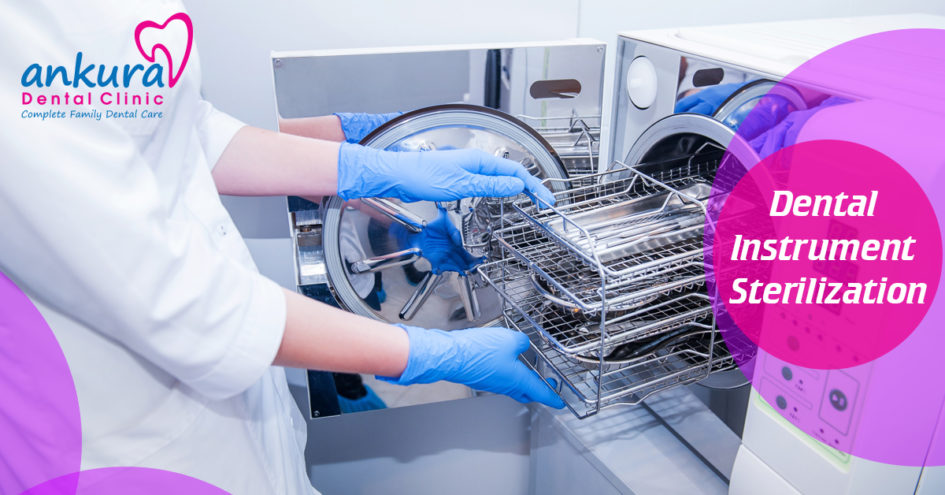Introduction:
In a day to day life busy dental practitioners face a serious challenge: to maintain or increase productivity while ensuring that patient safety remains the top most priority. At times, these may seem like incompatible goals. Advances in dental processing equipment, however, have empowered practices to develop safer processes while realizing efficiencies and ultimately, saving money.
Sterilization:
The first step in determining the settings for the sterilizer is to refer to the manufacturer’s instructions. Cleaning and sterilization process that meets ADA guidelines is vital to an effective infection control program. The efficiency of this process requires an understanding of proper methods, materials.
Use of a complete system that fulfills all elements that are critical maximizes efficiency and minimizes risks. Failing to follow the instructions will result in inadequate sterilization of the instruments in the sterilizer.
Many methods of instrument reprocessing are available. Closed cassette systems provide a more efficient and safer way to process, sterilize and organize instruments in a dental office by doing so, these eliminate manual steps during instrument reprocessing such as hand scrubbing and sorting of instruments, thereby improving safety and increasing productivity. Parameters such as time, pressure and temperature differs according to the type of sterilizer, materials being sterilized and individual models within sterilizer brands.
Transportation of Instruments to The Sterilization Area:
To avoid accidental injury with the contaminated instruments, utmost care should be taken to transport the instruments to the cleaning and sterilization area.
This is ideal, since cleaning, sterilizing and storing instruments in the same room where the delivery of patient care is provided increases the risk of cross-contamination.
Most dental offices have a designated area for instrument reprocessing that is separate from the treatment area. Some instruments and materials are single-use only.
The removal of single-use sharp instruments such as needles, blades, orthodontic wires and glass must be done at the point of use.
Single-use items should be segregated in the operatory, and those that are sharp or otherwise constitute a risk of injury must be discarded into a sharps container. Items such as a saliva ejector, can be disposed. Instruments should be placed in a suitable container at the point of use to overcome transcutaneous injuries during transport of the instruments to the particular processing area. The Centers for Disease Control and Prevention (CDC) states that, “Contaminated instruments should be handled carefully to prevent exposure to sharp instruments that can cause percutaneous injury. Finally, the tray of reusable instruments is taken to the sterilization area for processing.
Steam Autoclave:
Steam autoclaves are the most commonly used type of heat sterilizer in dental practices. Two types of processes employ steam under pressure. The difference between the two is the way by which the machine evacuates the air from the sterilization chamber and then introduces the steam.
Steam entering through the chamber from the water reservoir displaces the air as it leaves the chamber. The sterilization cycle time decreases as the temperature is increased.
The combination of pressurization of the chamber, steam and a high temperature for a prolonged period has the ability to destroy all microorganisms. A typical cycle for instruments includes heat-up and pressurization time, followed by a 15-to-30-minute cycle during which sterilization is taking place. Interruption of the cycle will result in instruments that are not sterile and therefore not safe for use on patients. After one sterilization cycle is completed the sterilizer must be depressurized and leave the sealed packets in for drying. The drying phase may take anywhere from 20-45 minutes. Upon removal from the sterilizer, sterile packs must be stored in a clean, dry area. Packs that become wet, torn, contaminated require sterilization. The unit must only be kept open after completion of the drying cycle.
Instrument Cleaning:
If procedures are used wherein hand scrubbing is necessary gloves, mask, eyewear and gown should always be worn while cleaning. Minimize the risk of injury by cleaning one instrument at a time. In general, three types of mechanical devices available are the ultrasonic cleaner, instrument washer and instrument disinfector.
Instrument Examination:
High-quality metal cassettes designed only to withstand high temperatures are preferred for use with steam and chemical sterilizers. Cleaning instruments, provides a good opportunity to examine, replace damaged instruments; lubricate items such as hand pieces; and also prepare instruments for sterilization.
Most of the sterilizers are provided with a cassette rack, which helps to prevent over-loading in the sterilizer, and hence, reducing the risk of ineffective sterilization and ultimately of infection and cross-infection. Instruments must be dry before packing if drying is not part of the cleaning process, time should be allotted to dry the instruments completely.
Sterilization Packing:
Sterilization packing is designed to allow penetration of heat, steam or vapor and then to seal the sterile instruments in the pack for storage. Packing used for instruments prior to sterilization includes wrap, paper or plastic pouches and nylon tubing. After sterilization, instruments should remain in packets until use. Different materials are used for different types of sterilizers. Unless mentioned, all packed instruments are for single use only.
By
Ankura Dental – Best Dental Clinic in Hyderabad
Tags: Cleaning and Sterilization, Dental Cleaning Tool, Dental Instrument Cleaning, Dental Instrument Examination, Dental Instrument Sterilization, Dental Sterilisation, Dental Sterilization Equipment, Dental Sterilization Packing, Dental Sterilizer, How to Clean and Sterilize Dental Instruments, Instrument Sterilization, Instrument Sterilization in Dentistry, Orthodontics, Sterilization, Sterilization of Dental Instruments, Top Sterilizers for Dental





Leave a Reply